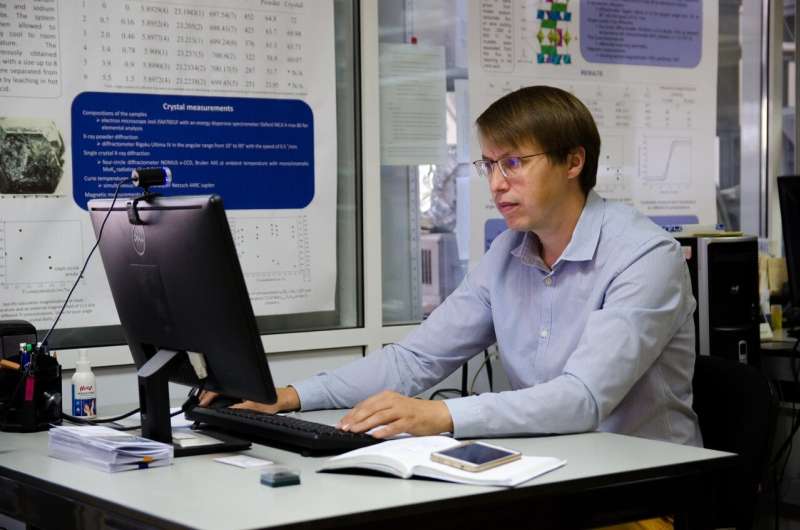Denis Vinnik, Doctor of Sciences (Chemistry), Professor, Head of the Department of Material Science and Physical Chemistry of Materials, Director of the Research Institute for Advanced Materials and Resource-Saving Technologies at SUSU. Credit: SUSU
The study of complex oxides of iron to create new functional materials is one of the most intensely developing fields of investigation for SUSU scientists. The physical properties of complex iron oxide systems can be varied by changing the chemical composition. This makes it possible to trace the fundamental effects that arise when ions are replaced. In a new study, researchers chose to investigate spinel-structured ferrites, changing their magnetic properties through modification of their chemical composition by substituting iron ions. The results of their research were published in Nanomaterials.
The researchers, an international group including scientists from SUSU and their colleagues from Belarus, Saudi Arabia and India examined ferrites of the Co-Ni system with double substitution of iron ions by thulium and terbium ions. The chemists were interested in the magnetic properties of the investigated compounds that manifest themselves in ferrites during the transition to the nanoscale.
During the study, the scientists established the peculiarities of the distribution of substituted ions in the structure of ferrite spinel. The relevance of the study was due to the correlation between the distribution of the substituent ions in the ferrite spinel and its influence on the magnetic properties under conditions of double substitution of iron ions by Tm and Tb ions comparable in radius.
"The samples were synthesized via the sol-gel method, which allows for the creation of nanoscale complex oxides. However, ultrasonic assistance was applied during the synthesis, which allowed us to achieve a more homogeneous distribution of substituting ions and to reduce the average size of the crystallites," said SUSU chemist Dr. Denis Vinnik.
The synthesis was carried out by scientists from Saudi Arabia. The study of microstructural parameters and magnetic properties of nanosized ferrite spinels was carried out at the SUSU Nanotechnology Research and Education Centre. As a result, specialists identified an interesting feature of the oxides under study: With the increase in the degree of substitution of iron ions by ions with large radii, the unit cell parameter decreased, although theoretically, it should have increased.
"We suggested that this anomaly could be the result of the effect of surface compression of nanocrystallites. Thus, the decrease in the crystallite size resulting from substitution by Tm and Tb ions led to an increase in the surface layer fraction. This, as we know, can lead to the effect of surface compression in nanoscale crystallites, and as a consequence, the deformation of the unit cell," said Aleksey Trukhanov, senior researcher of the SUSU Nanotechnology Research and Education Centre.
For now, the studies are theoretical, but they can be used as a foundation to complete further studies on the synthetization of compounds of complex iron oxides and correction of their properties. The scientists' plans include studying the functional properties of ferrite spinels in absorbing electromagnetic radiation.
The scientists noted that the chemical compounds can be used in electronics for the creation of sensors as well as in biomedicine for targeted delivery of medicines or contrast visualization.
More information: Munirah A. Almessiere et al. Impact of Tm3+ and Tb3+ Rare Earth Cations Substitution on the Structure and Magnetic Parameters of Co-Ni Nanospinel Ferrite, Nanomaterials (2020). DOI: 10.3390/nano10122384
Provided by South Ural State University
























